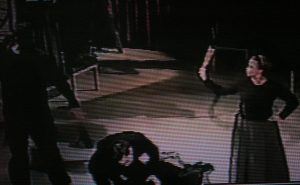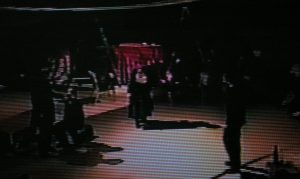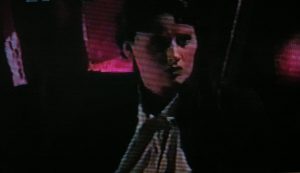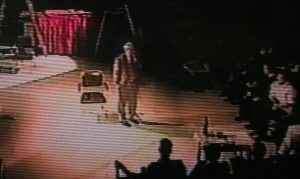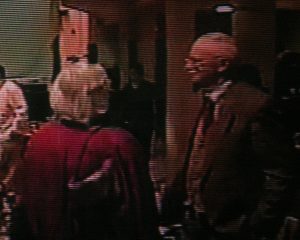
All the best for the holidays and for 2010.

Poet, Playwright, and Artist (1926 – 2008)
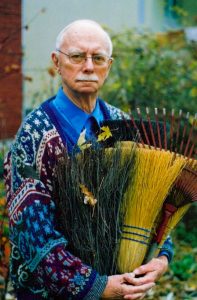
Welcome to our new website celebrating the life and work of James Reaney. We look forward to sharing news and resources about James Reaney with you.
The Porcupine’s Quill is reissuing A Suit of Nettles, winner of the 1958 Governor General’s Award for Poetry. Details of the launch to follow in April 2010.
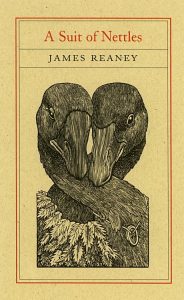
James Reaney’s One Man Masque was first performed by the author as part of “An Evening with James Reaney and John Beckwith” at the Hart House Theatre in Toronto on April 5, 1960. Originally planned as the premiere of Beckwith and Reaney’s opera Night Blooming Cereus, One Man Masque and Beckwith’s Five Pieces for Brass Trio were added to form the first half of the program.
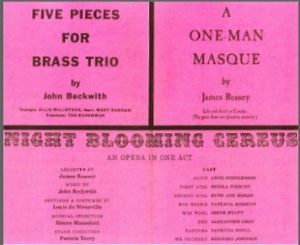
In his article “An Evening With Babble and Doodle: Presentations on Poetry” (Canadian Literature 12 Spring 1962, pages 37-43), James Reaney describes his ideas for presenting the poems as a masque:
Since the opera was to last only an hour John suggested that I read some poems to raise the curtain. I decided that something more than just a reading was called for, [… and] I ended up writing another libretto for a masque — masque in the sense of a series of tableaux and spectacles, or stage images. I had been working on a series of poems that presented a subject in various keys: you start out with a Dwarf, modulate to a poem about a Baby, proceed to one about a Dauphin (baby Prince) and eventually fly from it all with that baby among the birds — the humming-bird. This suggested a stage picture that started out with a cradle, proceeded through chair, table, bed, rocking-chair to coffin… [pages 41-42]
One Man Masque has been performed by Jerry Franken in 1974 at the Tarragon Theatre, Jeff Culbert at the Grand Theatre in 2002, and by Larry Beckwith at Nuit Blanche in 2010.
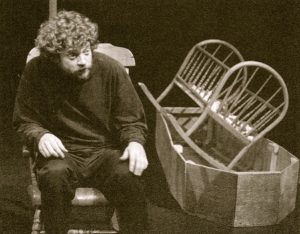
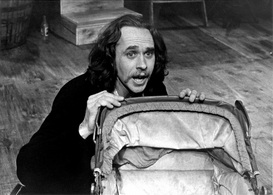
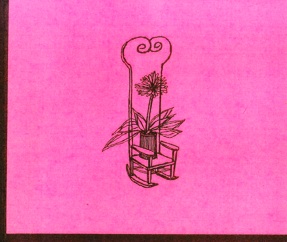
Night Blooming Cereus, a chamber opera in one act, is one of several musical collaborations between poet and playwright James Reaney, who wrote the libretto, and composer John Beckwith. In his autobiography Unheard of: Memoirs of a Canadian Composer, John Beckwith had this to say about his first opera:
“Furthering my ambition to compose an opera, I had the great good luck to find a librettist — a writer who understood music. James Reaney shared my love of opera, and early in our friendship in student days we spoke of perhaps collaborating on an original work. In early 1953 I received from him a draft of Night Blooming Cereus. The one-act opera he imagined taking shape as a sort of southern Ontario miracle play. It turned out to be the first of four operatic works we produced together over succeeding decades…” [Unheard Of, page 246]
Night Blooming Cereus calls for eight singers and an instrumental ensemble of fourteen players, and lasts about sixty minutes.[…] The image of a flower that blooms once a year — or by poetic licence once a century — stands for human hope and renewal…” [Unheard Of, page 247]
John Beckwith completed the music and orchestration in the summer of 1958, and CBC Radio commissioned a broadcast for the “Wednesday Night” program in April 1959 and again in 1960. The first stage production of Night Blooming Cereus was at the Hart House Theatre in Toronto on April 5, 1960 with the following cast:
ALICE: Anne Stephenson
FIRST GIRL: Shelia Piercey
SECOND GIRL: Ruth Ann Morse
MRS. BROWN: Patricia Rideout
MRS. WOOL: Irene Byatt
BEN: Alexander Gray
BARBARA: Patricia Snell
MR. ORCHARD: Bernard Johnson
Settings and costumes were by Louis de Niverville, musical direction by Ettore Mazzoleni and stage direction by Pamela Terry.
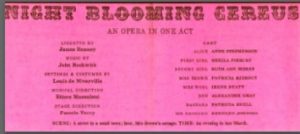
To listen to archived sound recordings of music by John Beckwith, see the complete catalogue holdings at the Canadian Music Centre.
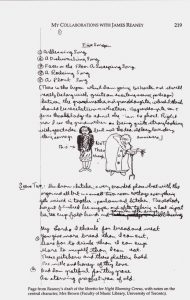
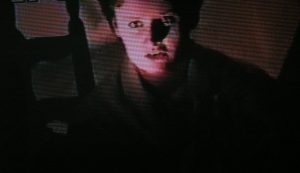
Zamorna! And The House By the Churchyard, which was performed by students of the George Brown Theatre School in 1999, has been published for the first time in Reaney Days in the West Room: Plays of James Reaney, edited by David Ferry.
The play blends the real world of the Brontë family with a creation from their literary juvenilia, Branwell’s fantasy world of Zamorna. On April 17, 1999, James Reaney attended a performance of the play at George Brown College. Afterwards, he and David Ferry, the play’s director, participated in a discussion with members of the audience.
From Scene 4, 1831 Heatherbell:
BRANWELL Well, you see, girls… I’m a poet.
EMILY (with a book) There’s an old Welsh law, Branwell, that says—
GIRLS There are three things it is death to be:
CHARLOTTE death to be a king
ANNE fall in love with a fairy woman
EMILY death to be a poet
Sewing music swells up.
GIRLS Death… it is death to be a poet.
